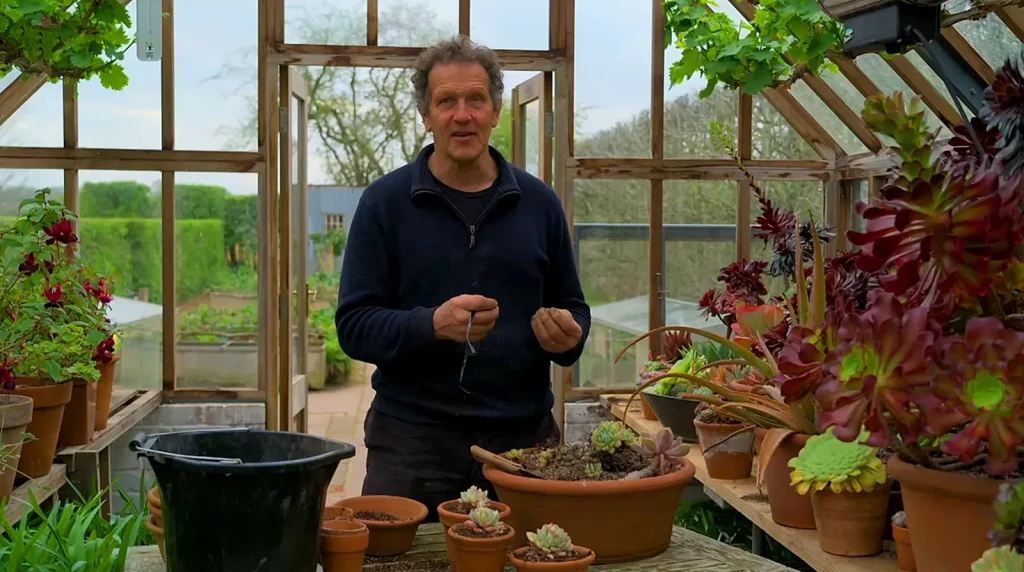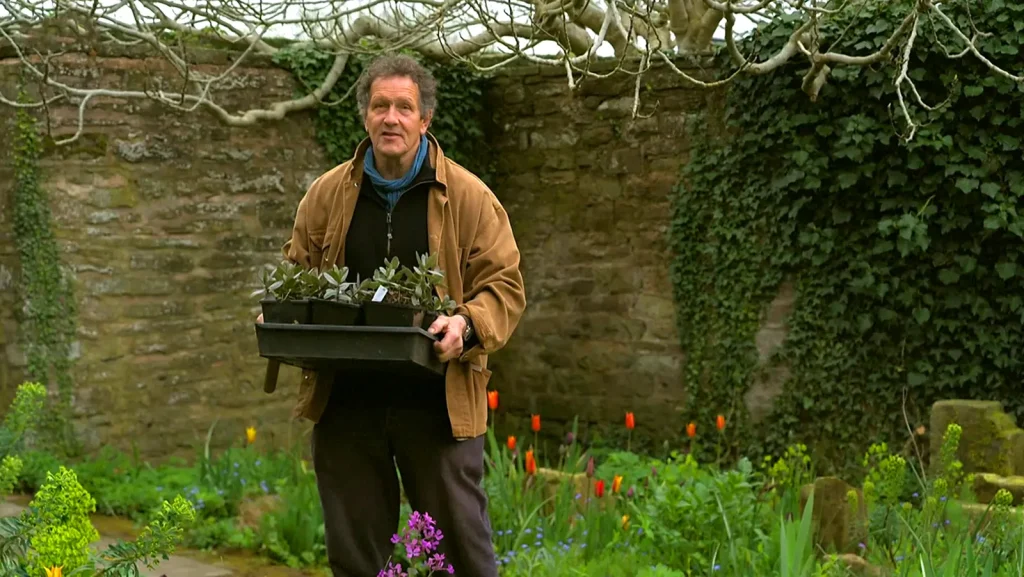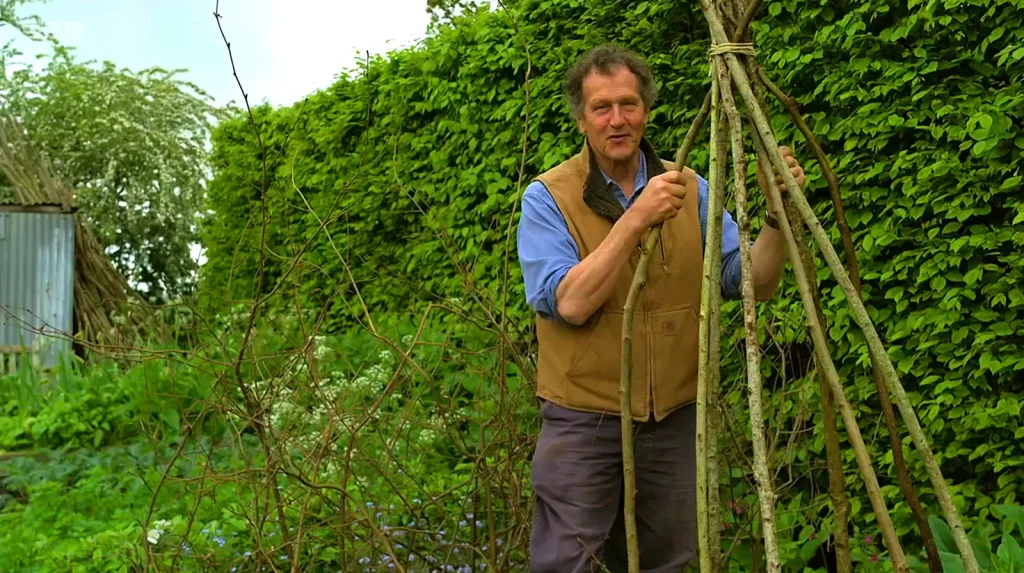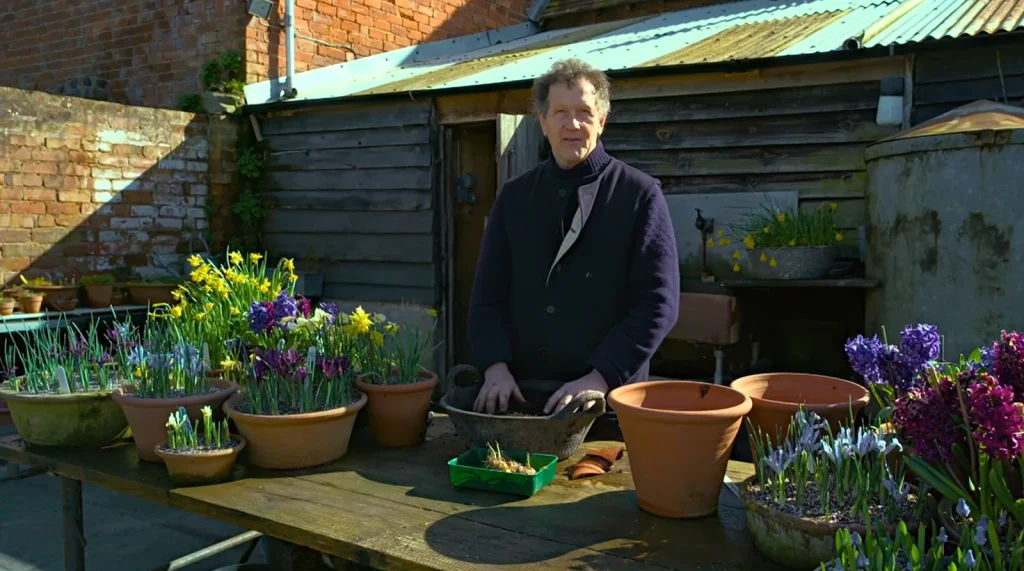Gardeners World 2024 – Compilations episode 2 – Monty Don and his esteemed team usher in a new gardening year with a celebratory look back at some of the most memorable moments from recent episodes of Gardeners’ World.
The journey begins with Monty Don, a renowned figure in the world of gardening, who delves into the diverse world of roses. He offers his expert advice on their care, showcasing various types and discussing the nuances of nurturing these beloved blooms. From selecting the right soil to pruning techniques, Monty’s insights are invaluable for both novice and experienced gardeners alike.
In another segment, we join Rachel de Thame as she explores a breathtaking garden in the heart of Kent. This garden is the epitome of a labor of love, where meticulous planning and disciplined care have ingeniously extended its season of interest. Rachel highlights the garden’s strategic layout and the precision in its design, illustrating how careful planning can result in a garden that offers beauty and interest throughout the year.
Nick Bailey, another integral member of the Gardeners’ World team, takes us on a journey to North Yorkshire. Here, he revels in the beauty of an extraordinary collection of flowering dogwoods. This segment not only showcases the stunning visuals of these plants but also delves into their cultivation and the ideal conditions for their growth. Nick’s passion for plants is evident as he walks us through this splendid collection, sharing tips and insights that viewers can apply in their own gardens.
Advolly Richmond, known for her expertise in garden history, sheds light on the fascinating life of Victorian plantswoman Ellen Willmott. This narrative is more than just a biography; it’s a journey through the life of a woman who left a significant mark on the world of horticulture. Advolly’s storytelling brings to life Ellen’s contributions, challenges, and the legacy she left behind, providing inspiration and a historical perspective to gardening enthusiasts.
Gardeners World 2024 – Compilations episode 2
The episode also features an intriguing segment about a self-confessed plantaholic who has transformed his home into an indoor jungle. This tour is not just about the sheer number of plants but about the journey of creating a personal oasis. The segment delves into the selection of plants, the challenges of indoor gardening, and how this green haven has impacted his life. It’s a story that resonates with many who find solace and joy in the company of plants.
Finally, the episode takes us to visit a gardener who has cultivated a collection of over a thousand aeoniums. This segment is more than a showcase of variety; it delves into the art and science of cultivating these unique plants. The gardener shares his journey, the challenges he faced, and the techniques he’s mastered in growing such an extensive collection. This segment is a testament to the dedication and passion that gardening can evoke.
Throughout the episode, viewers are treated to a blend of practical advice, inspirational stories, and a celebration of the beauty and diversity of the plant world. Each segment is carefully crafted to not only educate but also to inspire viewers to explore the endless possibilities of gardening. Whether it’s through the detailed care of roses, the meticulous planning of a garden, or the dedication to cultivating a unique collection, Gardeners’ World continues to be a source of inspiration and joy for gardeners of all levels.
Comprehensive Guide to Rose Pruning – Gardeners World 2024 – Compilations episode 2
Optimal Timing for Pruning Roses
Pruning roses at the right time is crucial for their health and vigor. Generally, late winter, around February or March, is ideal for this task. However, specific rose varieties may have different requirements, and it’s important to refer to individual rose profiles for more precise timing.
General Tips for Pruning All Rose Types
Proper Cutting Techniques
When pruning roses, ensure cuts are no more than 5mm above a bud and slope downwards, preventing water accumulation on the bud. This rule applies to all pruning actions, whether you’re removing dead wood, deadheading, or conducting annual pruning.
Strategic Bud Selection
Aim to cut to an outward-facing bud to foster an open-centred shape. For roses with a spreading habit, some stems should be pruned to inward-facing buds to encourage upright growth.
Height and Cleanliness of Cuts
It’s essential to prune to the appropriate height, even if a dormant bud isn’t visible. Clean cuts are vital, so keeping your secateurs sharp is a must. For larger stems, use loppers or a pruning saw.
Specific Pruning Techniques for Different Rose Types
Climbing Roses and Shrub Roses
When dealing with climbing roses and shrub roses, pruning strategies differ. Newly planted roses in these categories should not be pruned hard, as is the case with other types.
Dealing with Overgrown or Unknown Roses
Identifying Rose Types
If you inherit a rose or lose its label, determining the rose type can guide your pruning. Climbers or ramblers have long, arching stems and may require support. For these, gentle pruning is advised, especially if there’s a single thick stem.
Pruning Shrub or Bush Roses
For smaller roses, follow guidelines for patio and miniature roses. If the rose is larger, it might be a hybrid tea, floribunda, or a type of shrub rose. In such cases, remove one or two stems close to ground level and shorten the remaining stems by a third to a half.
Post-Pruning Care
Feeding and Mulching
After pruning, it’s crucial to feed the roses with a general purpose or rose fertilizer in spring. Mulching with garden compost or manure helps in retaining moisture and suppressing weeds.
Trees for Smaller Gardens: A Comprehensive Guide
In the world of gardening, small spaces don’t mean limited options. Trees, often considered as grand, towering giants, can be the perfect fit for smaller gardens too. Whether you’re working with a compact city plot or a modest backyard, choosing the right tree is crucial to maximizing beauty and functionality. This guide delves into the world of small trees, ideal for such spaces, focusing on their decorative and practical value.
Selecting the Perfect Tree for Your Small Garden
Understanding Size and Proportion
The key to choosing trees for smaller gardens is understanding the importance of size and proportion. Even small ornamental trees can reach significant heights over time. Therefore, it’s essential to consider both the height and spread of a tree. For extremely limited spaces, columnar or weeping forms can be ideal, as they occupy less vertical and horizontal space.
Seasonal Interest
When selecting a tree, consider its seasonal appeal. Ideally, choose a tree that offers more than one season of interest, be it through flowers, fruits, foliage, or bark. This ensures that your garden remains visually appealing throughout the year.
Deciduous vs. Evergreen
Both deciduous and evergreen trees have unique benefits. Deciduous trees offer a range of autumn colors, while evergreens provide year-round foliage. Your choice depends on what you value more in your garden’s aesthetic.
Trees for Specific Conditions
Some trees are better suited for particular conditions like container planting or wet soils. Understanding your garden’s specific needs is vital for making an informed decision.
Proximity to Buildings
When planting trees near buildings, it’s important to consider the potential risks. Certain tree species are safer to plant close to structures than others.
Top 5 Trees for Smaller Gardens
- Acer griseum – Known for its beautiful flaking bark and rich autumn foliage.
- Amelanchier × grandiflora ‘Ballerina’ – Offers stunning white spring flowers.
- Crataegus persimilis ‘Prunifolia’ – Known for its spectacular autumn color.
- Sorbus ‘Joseph Rock’ – Notable for its attractive berries and autumn leaves.
- Prunus ‘Amanogawa’ – A columnar tree with lovely spring blossoms.
Practical Considerations
Before planting, it’s wise to draw a scale plan of your garden and plot the mature size of the tree. This helps in visualizing the space it will occupy and its impact on the surroundings, including neighboring gardens.
Visiting Mature Gardens
To get a better idea of how a particular tree might look in your garden, consider visiting gardens with well-established trees. This can provide valuable insight into the tree’s growth pattern, size, and seasonal changes.
Selecting the right tree for a smaller garden can transform a limited space into a vibrant, multi-seasonal haven. By considering factors like size, seasonal interest, and specific garden conditions, you can choose a tree that not only fits your space but also enhances its beauty throughout the year.
Mastering the Art of Cultivating Flowering Dogwoods
Discover the essential techniques for growing flowering dogwoods. Learn how to choose, plant, and care for these stunning trees and shrubs to create a breathtaking garden display.
Choosing the Right Flowering Dogwood
Understanding Varieties and Conditions
As we delve into the world of flowering dogwoods (Cornus), it’s crucial to select a variety that complements your garden’s aesthetic and environmental conditions. These plants, ranging from majestic trees to large shrubs, offer a palette of white and pink blooms, perfect for enriching any garden space.
Selecting Based on Flower Color and Size
Most flowering cornus begin with green flowers, transitioning to their advertised color before adopting a pink hue in summer. If you desire pure white blooms, anticipate these pink tinges as the flowers age. For winter vibrancy, consider C. mas and C. officiinalis, known for their resilience and cheerful yellow blooms heralding spring’s arrival.
Acquiring Your Flowering Dogwood
Where to Purchase
While garden centers offer a selection of flowering cornus, specialist nurseries and mail order suppliers provide a broader range. To visualize these plants in a mature state, visit the National Collection of Cornus at Newby Hall in North Yorkshire or RHS Garden Wisley in Surrey.
Planting and Initial Care
The Ideal Planting Conditions
Timing and Location
Planting from autumn to early spring is optimal. Choose a location with sun or dappled shade to avoid leaf scorch in summer.
Soil Preparation
For optimal growth, prepare the soil with well-rotted garden compost, leaf-mould, or manure. Cornus kousa prefers neutral to acidic soil, while North American species like C. florida and C. nuttallii tolerate a broader pH range.
Watering and Staking
Newly planted dogwoods require regular watering for three to four years. Larger trees exceeding 2-3ft in height should be staked to prevent leaning.
Ongoing Maintenance
Essential Watering and Feeding Tips
Regular Watering
For the first few years, ensure regular watering, especially during dry spells. Check the soil moisture level before watering to avoid over-saturation.
Nutrient Management
In poor soils, apply a balanced feed like Growmore or blood fish and bone in late winter. Mulching with organic matter is crucial for soil health, but leave a gap around the trunk to prevent rot.
Caring for Mature Dogwoods
Once established, dogwoods require minimal care. Pruning is generally discouraged to maintain their natural shape and beauty.
Pruning and Training
Gentle Pruning for Shape Enhancement
Young dogwoods benefit from occasional trimming to achieve a desired silhouette. Prune during dormancy, focusing on creating a clear trunk and avoiding heavy cuts that could damage the tree’s natural habit.
Propagation Techniques
Softwood Cuttings and Grafting
Softwood Cuttings in Spring
In late spring, take softwood cuttings, ensuring they are kept moist. Use a mix of multi-purpose compost and horticultural grit or perlite for planting.
Grafting for Faster Flowering
Grafting involves joining a scion from a desired cultivar to a seed-raised rootstock. This method accelerates flowering but requires practice for success.
Growing from Seeds
Seed Collection and Germination
Collect ripe red fruit in autumn, clean the seeds, and store them in damp sand over winter. Sow in late winter-early spring at 15-21°C for germination.
Common Issues and Solutions
Disease Management
In wet springs, be vigilant for Cornus anthracnose and root diseases like honey fungus and Phytophora root rot. Regular monitoring and preventive care are key to maintaining healthy dogwoods.





Thank you for brightening my soul with these wonderful reminders of gardening at its best.